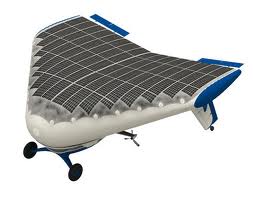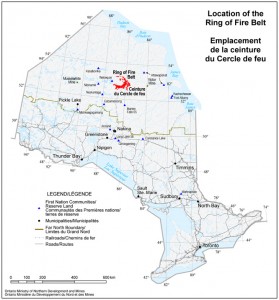Solar Ship, a Toronto, Ontario, Canada-based company, my home town, has built a one-of-a-kind, helium-filled, delta-shaped. solar-powered, heavier-than-air, airship. It has properties of both an airplane and dirigible, but doesn’t require mooring like the latter. It is even designed to take off with plain air filling its hybrid balloon delta wing in the event of a puncture and helium loss.

Solar Ship’s power comes from two sources, the solar panels that extend across the surface of its delta wing, and the on board batteries. The demonstration aircraft, called the Caracal, requires between 50 and 100 meters (165-330 feet) clearance on takeoffs and landings depending on how much payload is on board. Capacity for the current model is 750 kilograms (1,650 pounds) with a range of 2,500 kilometers (1,550 miles), and a maximum speed of 120 kilometers (75 miles) per hour. The company is planning to build larger models with the largest capable of handling 30 ton payloads for distances of up to 6,000 kilometers (over 3,700 miles).
Why build such an aircraft? The immediate need appears to be resource development in the Canadian North where there are few permanent roads, and where climate change is making winter ice roads more unstable. Today these areas receive air service from small planes that either land on temporary runways or using floats on lakes. With Solar Ship, resource developers do not need to carve extensive runways out of the boreal forest to receive large payloads of essential materials.
Wasaya Airways, an aboriginal-owned airline, located in Thunder Bay, Ontario, on Lake Superior, is Solar Ship’s first customer. They plan to service an area in Northern Ontario known as the Ring of Fire, one of the richest untapped mineral deposits in the world. An area in the James Bay Lowlands, south of Hudson and James Bay, the Ring of Fire covers 5,120 square kilometers (1,980 square miles). It is rich in chromite and other metals. More than a dozen mines are in the planning stage but getting people, supplies and mined ore in and out of this remote area lends itself to innovative transportation solutions.

Demo flights for Solar Ship are planned and if it proves itself there are many other applications for this novel aircraft including:
- Supporting remote campsites and locations by providing cargo and passenger service
- Delivery of sensitive medical supplies and perishable cargo to remote areas
- Disaster-relief support where traditional transportation would have great difficulty in reaching the victims
- Remote maintenance of infrastructure such as hydro-electric transmission lines, cellular towers, and oil and gas pipelines
- Air surveillance for policing, military applications and remote sensing
- Becoming a temporary telecommunication link for isolated communities
- Linking isolated remote communities currently not supported by traditional aircraft or other long distance transportation technology
















Apps for:
Rescue
mapping
tourism rides
Search Rescue.
Cargoes (non urgent type).
Surveying.
Firefighting.
Cargo
MedEvac, IE say 200 in 1 ship pod.
Pvt Air Yacht.
Has it actually flown with a human crew?
There are videos at http://www.solarship.com/video. Some appear to be manned flights. But the solar cell membrane is not evident in the images.
These guys are great, met Jay Godsall and his team whilst I was in Ontario earlier this year. I thought they were focusing on delivering medicines in remote locations in Africa – but what the heck, this tech is so adaptable for all remote locations. Interesting that such a sustainable air transport technology is being used to support the extractives industry, an interesting partnership, eh! Keep up the great work to move sustainable aviation forward Jay.
http://solarship.org/ and http://solarship.com/video
Hi Maurice, There are so many applications for this innovative transportation technology. And if they can scale it up to make it handle up to 30 ton payloads I would expect it can become a fixture even in the construction industry as an alternative to sky cranes and helicopters. Thanks for your comment.
I’ve had this concept in my mind for two decades. But, I’m not an engineer. Thus, I had no way to go from concept to design to prototype. I’m glad that someone is proving that the concept works. I have an idea for two viable market niches for this aircraft. Hopefully, someone in the company will see this comment and contact me.
Hi Tom, You should consider contacting the company directly. The link to their website can be found in the article.